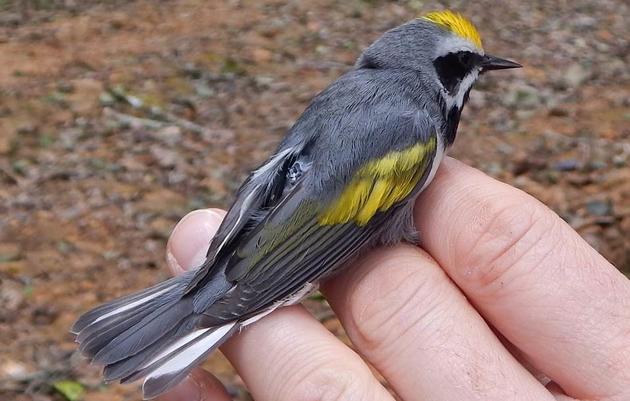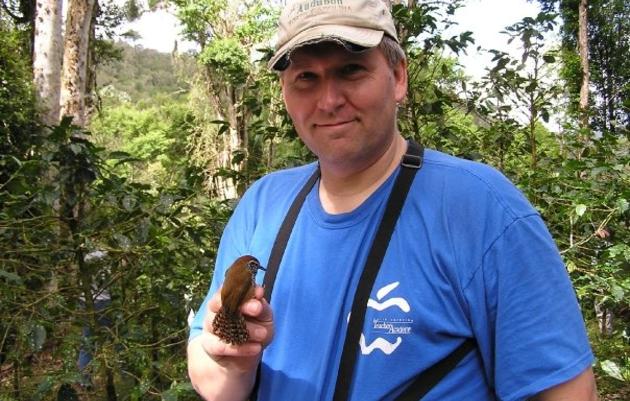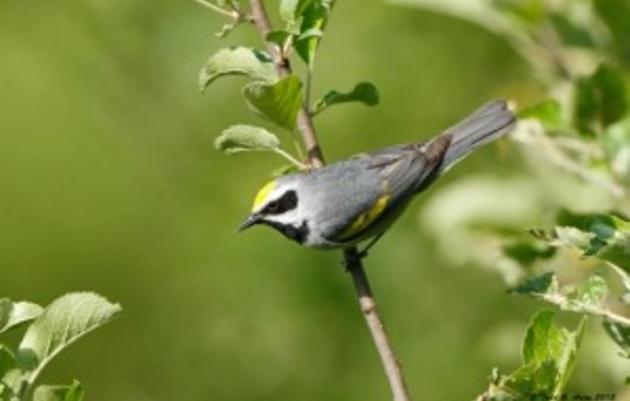Audubon NC has been working hard to support struggling populations of priority bird populations. The Golden-winged Warbler is at the top of our conservation list, and tracking their migration routes is essential to the success of their species.
Golden-winged Warblers begin their northward migration from Central and South America mid-March. Taking approximately 45 days, they will either follow a path through Mexico and cross at the Texas border or they may travel across the Gulf of Mexico.
While scientists hypothesized this route for years, we now know this to be true thanks to geolocation tracking technology. Until recently, small birds such as warblers could not carry tracking devices for more than a season without detriment due to device weight exceeding the recommended safe threshold of around 5% of the bird’s body mass.
Recent advances in the miniaturization of these light-level sensing geolocators* have expanded researchers’ ability to track a wider size range of birds, including small songbirds such as Prothonotary, Canada, and Blackpoll Warblers.
Because the location-reference data is stored on the device, researchers must recapture the birds equipped with geolocators in order to retrieve this key data. It is quite amazing to think that you can not only catch your target bird once but twice after nearly a year has passed. But as researchers did just that, we learned something more in the process. It seems that these warblers exhibit site fidelity on their wintering grounds. It is unclear to what degree, if any, the sites are defended but we do know that the birds initially respond to song playback though they rarely sing themselves during this time of year.
While published papers are expected to compile data for reporting in Fall 2017, preliminary results from the 21 geolocators deployed at an organic coffee farm in Nicaragua in February 2016 reflect a return rate (24%) similar to other studies. Five Golden-winged Warblers returning to the Finca Esperanza Verde in Matagalpa were successfully recaptured. When data is retrieved from the minute devices, we will learn from where in North America these individuals migrate. With this information, we are adding migration routes and wintering habitat suitability to our knowledge of breeding ground preferences. With this knowledge, we are better able to understand how we can help reverse the population decline of the Golden-winged Warblers.
Thank you to John and Lizzie Diener for returning to Nicaragua’s cloud forest in November/December 2016 to complete geolocator retrieval.
*Light level loggers can estimate global position by measuring length of day (which varies by latitude) and solar noon (which varies by longitude).







